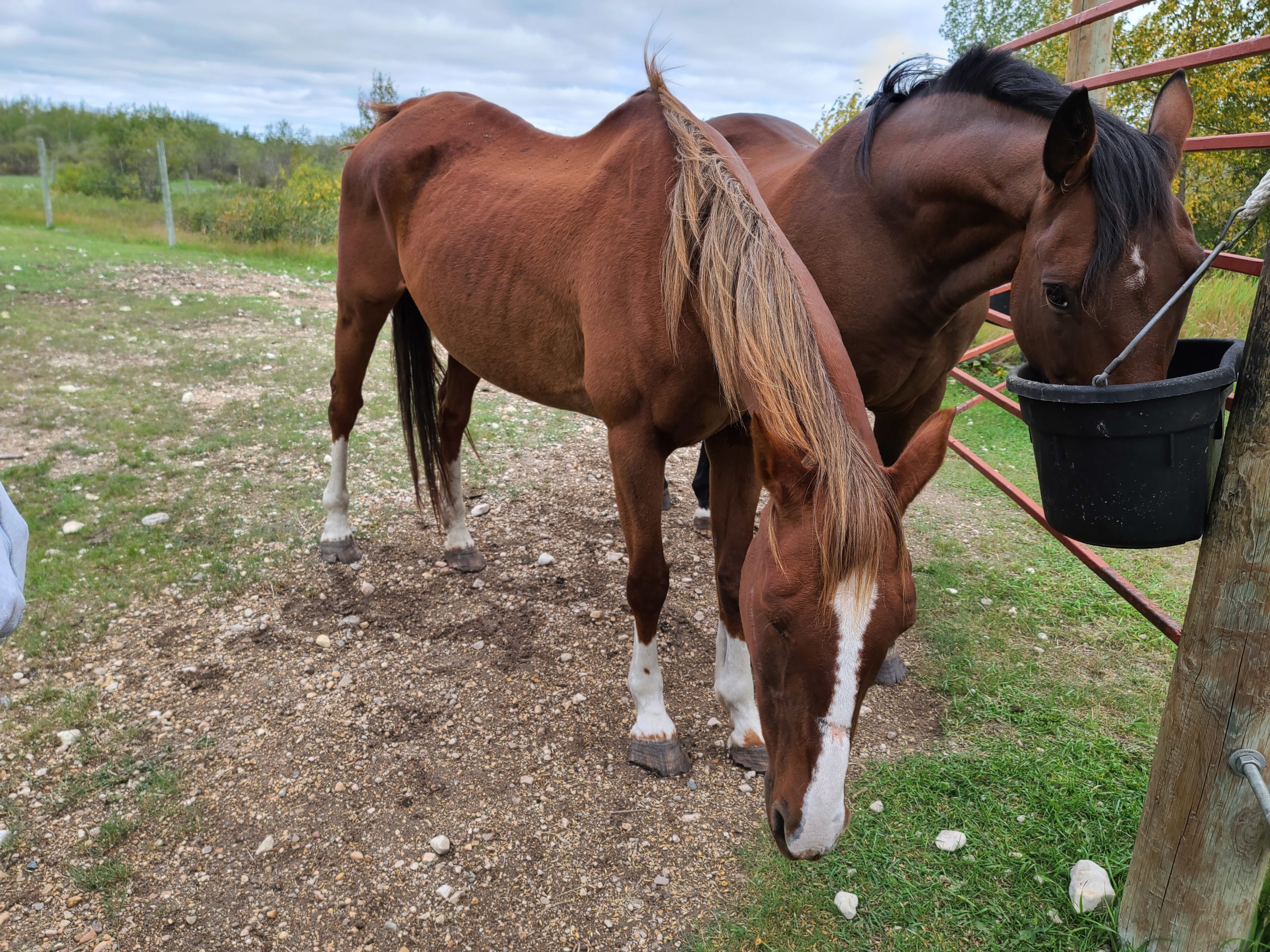 Sometimes we get horses in that are underweight, of course, we always get a vet check done to see if there is a medical reason for it. Usually, there is a float required for their teeth. Horses get sharp points on their teeth that make it very difficult for them to eat. Some horses also crib (chewing on wood and other surfaces), this causes their teeth to wear down prematurely and makes it hard for them to eat normally. One of the things that becomes difficult is grazing as they are not able to tear the grass with their worn-down teeth.
Sometimes we get horses in that are underweight, of course, we always get a vet check done to see if there is a medical reason for it. Usually, there is a float required for their teeth. Horses get sharp points on their teeth that make it very difficult for them to eat. Some horses also crib (chewing on wood and other surfaces), this causes their teeth to wear down prematurely and makes it hard for them to eat normally. One of the things that becomes difficult is grazing as they are not able to tear the grass with their worn-down teeth.
Another thing we do for all horses as they arrive is deworming and delousing to ensure they are not bringing in any nasty little parasites with them and spreading them to the rest of the herd. Worms can also cause weight loss. Dewormer can be purchased from your vet or most feed stores and it’s important to deworm your horse twice a year, we usually do it spring and fall. We also have them looked at by a farrier to get trimmed and ensure there is nothing adverse happening there.
 From experience, we have also found that quarter horses tend to be more likely to lose weight in the winter time whereas warm bloods, Thoroughbreds, Arabians, and Standardbreds tend to lose weight in the summer. Quarter horses expend more energy in the wintertime when shivering and trying to keep warm whereas the others lose more weight in the summertime expending more energy keeping the bugs off and trying to keep cool. Not sure if there is any scientific information out there to back that up, just something we have observed.
From experience, we have also found that quarter horses tend to be more likely to lose weight in the winter time whereas warm bloods, Thoroughbreds, Arabians, and Standardbreds tend to lose weight in the summer. Quarter horses expend more energy in the wintertime when shivering and trying to keep warm whereas the others lose more weight in the summertime expending more energy keeping the bugs off and trying to keep cool. Not sure if there is any scientific information out there to back that up, just something we have observed.
While all that is being sorted out, we start them on a nice warm mash, usually two times a day. From there this can be adjusted to three or four times a day if needed. It is wise to measure the circumference around the your horse where the girth line is and take pictures monthly to help determine a change. You should see a noticeable change within a month, although it can take several months to bring a horse back to a healthy weight.
 In addition to feeding the mash, you should always allow the horse to free graze on grass or have unlimited, good quality hay. The horse should also have access to unlimited water. If you are not able to put weight on your horse with mash, it would be a good idea to get a complete workup done on them, including having them tested for Cushing’s Disease.
In addition to feeding the mash, you should always allow the horse to free graze on grass or have unlimited, good quality hay. The horse should also have access to unlimited water. If you are not able to put weight on your horse with mash, it would be a good idea to get a complete workup done on them, including having them tested for Cushing’s Disease.
Remember to start slow, start feeding your horse 1/4 of the following recipe and slowly increase the amount over 2 weeks until they are getting the full amount. If your horse will not eat the mash, start of with oats and gradually switch them over to the mash. Most horses will not refuse oats.
Warm Mash Recipe for Horses
- 2 cups senior feed (Rolling Acres Senior Maintenance, Hoffman’s Senior Pellets, Step Right – Step 6 OR Master Feeds Senior Feed)
- 2 cups high-fat feed (Master Feeds Finishing Touch, Hoffman’s Pro Fat Pellets, Rolling Acres Extra Fat & Fibre, Step Right – Step 8 Hi-Fat OR Master Feeds Krunch)
- 2 cups soybean meal (Master Feeds Soybean meal OR Premium Grains Soybean Meal)
- 2 cups alfalfa pellets (Alfatec Alfalfa Pellets OR Alfatec Alfalfa Cubes)
- 2 cups beet pulp (Premium Grains Beet Pulp OR Master Feeds Beet Pulp) (optional)
- 1/4 cup loose minerals (Hoffman’s Loose Minerals OR Master Feeds Horse Minerals)
- 1/4 cup camelina oil (Smart Earth Camelina Oil) OR 1 scoop Masterfeeds Equine Power
- 1/2 tsp. electrolytes (DVL Electrovite Powder)
Add all ingredients to a bucket. Add warm water to about two inches above the ingredients, and soak for a minimum of 20 minutes. Soak longer if you are adding beet pulp as it can cause choking if it is not fully softened. Beet pulp is optional because its nutritional value is quite low but you can add it for bulk if you have a horse that needs more in its belly.


